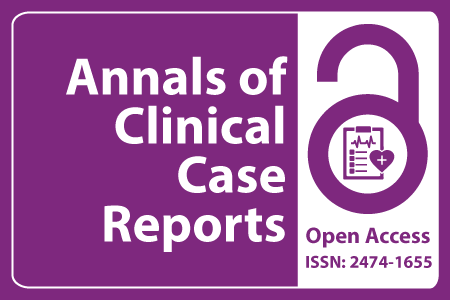
Journal Basic Info
- Impact Factor: 1.809**
- H-Index: 6
- ISSN: 2474-1655
- DOI: 10.25107/2474-1655
Major Scope
- Signs and Symptoms-Clinical Findings
- Lung Cancer
- Endoscopy
- Child Birth
- Transplantation Medicine
- Trauma
- Physical Medicine & Rehabilitation
- Internal Medicine
Abstract
Citation: Ann Clin Case Rep. 2016;1(1):1068.DOI: 10.25107/2474-1655.1068
The Success of Endoscopic Stenting for Anastomotic Stricture of Hepaticojejunostomy after Pancreaticoduodenectomy in a Child with Pancreatic Injury
Fujii T, Shimono R, Tanaka A, Kubo H, Katami H, Yukiko W, Suto H, Oshima M, Okano K, Suzuki Y, Yamashita T, Kobayashi K, Fujimori T, Kato K and Kamada H
Department of Pediatric Surgery, Kagawa University, Japan
Department of Gastroenterological Surgery, Seirei Mikatahara General Hospital, Japan
Department of Gastroenterological Surgery, Kagawa University, Japan
Department of Gastroenterology, Kagawa University, Japan
*Correspondance to: Ryuichi Shimono
PDF Full Text Case Report | Open Access
Abstract:
The management of pancreaticoduodenectomy (PD) complications for pancreatic injuries in children is rarely reported. We performed PD for an 8-year-old boy with severe pancreatic injury due to a traffic accident. However, the patient suffered from anastomotic stricture of hepaticojejunostomy. We performed repeated double balloon endoscopy (DBE) dilation and stenting for the anastomotic stricture. There was no cholangitis from endoscopic stenting for 11 months following the procedures. Balloon dilation and stenting using DBE for children with anastomotic stricture of hepaticojejunostomy can be safely and usefully performed.
Keywords:
Double balloon endoscopy; Anastomotic stricture; Pancreaticoduodenectomy; Pediatric; Pancreatic injury
Cite the Article:
Fujii T, Shimono R, Tanaka A, Kubo H, Katami H, Yukiko W, et al. The Success of Endoscopic Stenting for Anastomotic Stricture of Hepaticojejunostomy after Pancreaticoduodenectomy in a Child with Pancreatic Injury. Ann Clin Case Rep. 2016; 1: 1068.













